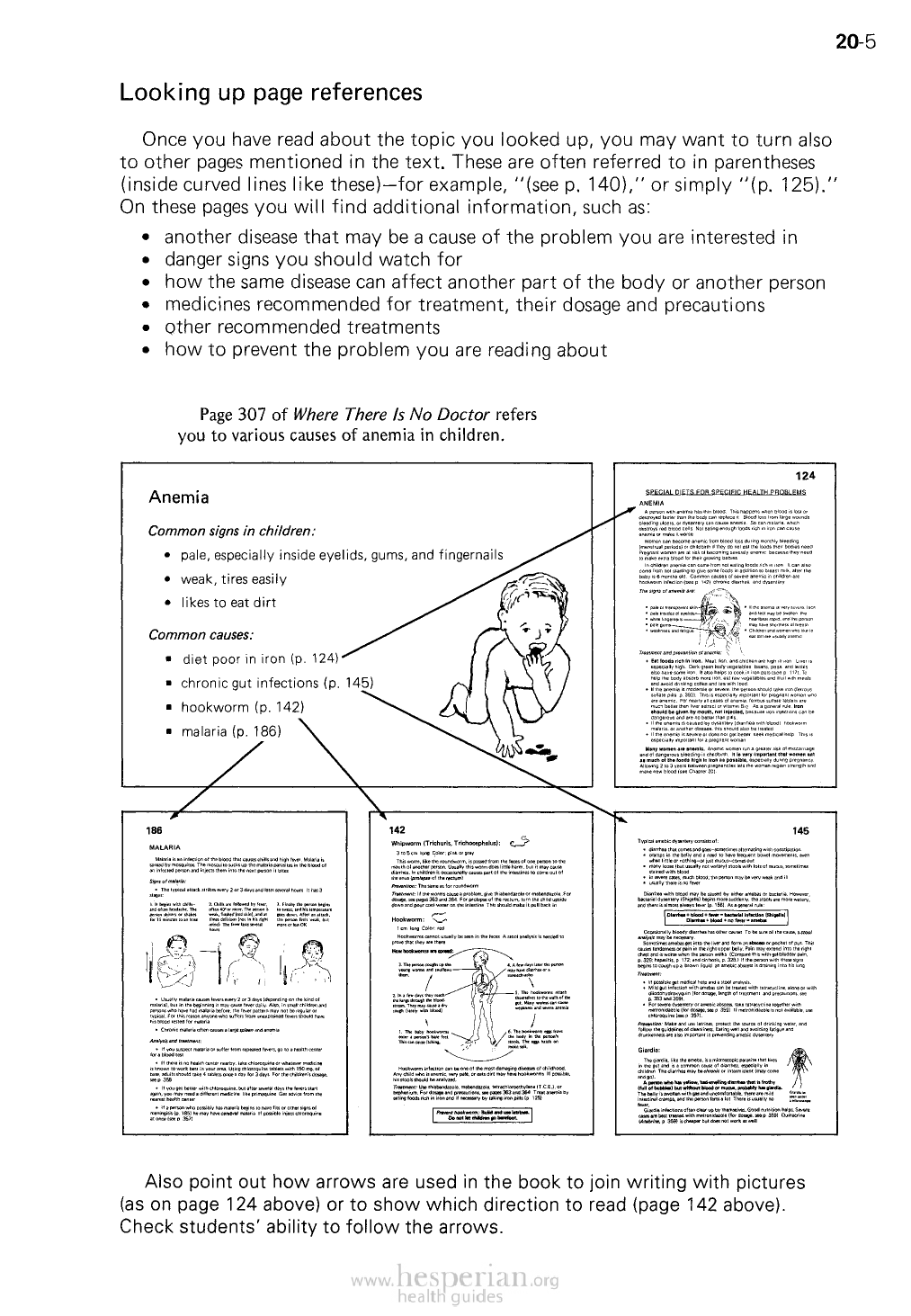
20-5
Looking up page references
Once you have read about the topic you looked up, you may want to turn also
to other pages mentioned in the text. These are often referred to in parentheses
(inside curved lines like these)—for example, “(see p. 140),” or simply “(p. 125).”
On these pages you will find additional information, such as:
• another disease that may be a cause of the problem you are interested in
• danger signs you should watch for
• how the same disease can affect another part of the body or another person
• medicines recommended for treatment, their dosage and precautions
• other recommended treatments
• how to prevent the problem you are reading about
Page 307 of Where There /s No Doctor refers
you to various causes of anemia in children.
Also point out how arrows are used in the book to join writing with pictures (as on
page 124 above) or to show which direction to read (page 142 above). Check students’
ability to follow the arrows.